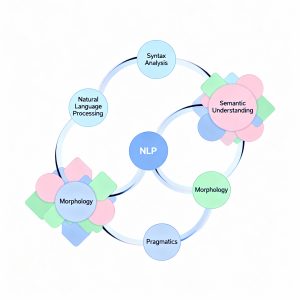| DSDM (Dynamic Systems Development Method) was developed in the 1990s as a reaction to the requirement for more adaptable and effective methods for creating systems within the fast-changing business and technological world. Since then, it has expanded into one of the most recognized Agile methodologies and remains in use for handling complex projects. This guide will lead you through the essence of the DSDM methodology, its principles, lifecycle, benefits, and implementation tactics. |
DSDM is an Agile project management and software development method for delivering quality software within time and budget constraints. It concentrates on business value delivery and allows flexibility and responsiveness throughout the project life cycle. While DSDM may be a different approach from other development methods, it emphasizes proactive stakeholder participation, iterative development, and a controlled method of risk management.
The DSDM philosophy is that
“Best business value emerges when projects are aligned to clear business goals, deliver frequently and involve the collaboration of motivated and empowered people.”_
The Eight DSDM Principles
The eight primary principles defined by the Dynamic Systems Development Method emphasize and underline everything. Those guiding principles help direct organizations and teams through each project step. Guided by them, projects can stay relevant as far as delivery of business value and evolving needs are concerned.
| DSDM Principles | Why they are important |
| Prioritize the business needs | The project should always prioritize the delivery of business value. The main aim is to ensure that development is conducted according to the overall business goal. |
| Deliver within the time | Time is critical in DSDM. Projects are delivered within a predefined period to facilitate business needs to be met immediately. Any adjustments in scope are done to make them fall within the given deadlines. |
| Seamless Collaboration | Collaboration and stakeholder engagement are essential to the success of a DSDM project. The business representatives, development team, and other stakeholders collaborate closely throughout the process. |
| No compromise on quality | Although DSDM focuses on speed and flexibility, it never compromises on the quality of the final product. All deliverables must be of the highest quality. |
| Iterative development | DSDM is iterative, with repeated development phases and feedback loops. This enables teams to refine the solution and respond to change continually. |
| Build incrementally from firm foundations | DSDM is incremental, starting from a firm foundation and delivering small, working chunks of the project over time. |
| Evolve iteratively, aligned with the business objective | The development process is divided into cycles of work, each incrementally adding to the end product, always in alignment with the business aims. |
| Constant and continuous communication | Open and clear communication is paramount. All project members must be able to communicate information easily and debate issues, risks, and variations. |
DSDM (Dynamic Systems Development Method) Life Cycle
The DSDM approach is structured in a life cycle with clearly defined phases, each focusing on various elements of the development process. Each phase is aimed at producing regular, high-quality results.
- Pre-project phase
The stage is for initial planning and definition of scope, laying the ground for project success. Stakeholders define business requirements and establish goals to make sure the project fits into business objectives. Overall, it ensures that the system operates efficiently and effectively. - Feasibility Study
During this stage, a feasibility study is done to determine if the project is technically and financially feasible. The feasibility stage also involves making an initial project plan, determining key requirements, and establishing priorities. - Foundation development
This stage establishes the foundation for development, such as establishing the technical architecture, detailed requirements, and a shared understanding of the project. Prototypes can be created to confirm business needs and give early feedback. - Evolutionary Development
This is the core stage of DSDM, in which the product is built incrementally. Iterative cycles enable continuous feedback, tuning, and adaptation. The emphasis is on delivering functional increments that meet business requirements.
- Incremental Deployment
After the product is built, this stage concentrates on testing, training, and deployment. The solution is deployed to end-users, and adjustments are made as required after deployment. - Post-project
This stage comprises assessing the achievement of the project, documenting lessons learned, and identifying any subsequent enhancements or long-term support to be provided.
Benefits of DSDM
The Dynamic Systems Development Method is characterized by many benefits that justify its use to handle complex fast-track projects. These benefits encompass:
- Flexibility at its best
The incremental nature of DSDM supports rapid response to changing business requirements or market demands. This responsiveness guarantees that the end product conforms to existing business needs. - Faster Time to Market
Through its emphasis on delivering working software iteratively, DSDM assists teams in quickly delivering functional parts of the system, lowering time to market and facilitating timely feedback.
- Enhanced Stakeholder Involvement
DSDM necessitates close cooperation with stakeholders at all times during the development process. This guarantees that the project is aligned with business goals and concerns are dealt with on time. - Better Quality
Through iterative development, feedback loops, and ongoing testing, DSDM keeps the product at high quality throughout its life cycle. - Risk Management
DSDM’s formal phases and frequent reviews offer a chance to spot risks early on in the process. This forward-looking approach to risk management reduces the likelihood of issues arising before they become major problems. - Business Value Focused
As the methodology focuses on business aims and values, DSDM ensures that the development effort delivers actual value to the business, not just software.
Disadvantages of DSDM
While DSDM has numerous benefits, it also has some disadvantageous practices that might make it inappropriate for some projects. These are:
- Needs Ongoing Stakeholder Involvement
DSDM is based on ongoing collaboration with stakeholders. Without available or involved stakeholders, the project risks long delays or lack of congruence with business objectives. - Large Projects Complexity
For very large projects, DSDM is prone to becoming cumbersome. The numerous iterations and the role played by stakeholders can lead to logistical hassles. - Constrained by Fixed Budget and Time
There can be some limitations of fixed time and budget, therefore, the project scope has to be frequently rescaled to ensure it fits with these constraints. This can introduce compromises on function or quality, unless handled rigorously. - Requires Experienced Teams
DSDM presumes that the development team is experienced in Agile practices and can handle iterative development. Inexperienced teams might not be able to cope with the methodology’s requirements.
Implementing DSDM in Your Organization
Successfully implementing DSDM in an organization takes meticulous planning, consideration, and adherence to the eight core principles that are there to guide businesses. Following are some important steps to implement the methodology successfully:
1. Train Your Team
Ensure your team is well-versed in DSDM principles and practices. Consider bringing in certified DSDM trainers or providing internal training to build Agile expertise.
2. Engage Stakeholders
DSDM relies on close collaboration with stakeholders throughout the project. Ensure that key business representatives are involved early and remain committed to the process.
3. Define Clear Business Goals
Before embarking on a DSDM project, clearly define the business objectives and expected outcomes. This ensures that the development process remains focused on delivering business value.
4. Set Up Iterative Development Cycles
Organize your project into manageable development iterations. Each cycle should deliver a tangible, working component of the system that can be reviewed and improved upon in the next iteration.
5. Utilize Prototyping and Feedback
Initial prototypes can be used to validate requirements and business needs. Utilize stakeholder comments from initial prototypes to help shape development and align with business objectives.
6. Review and Improve Continuously
At the end of every iteration, conduct a review to assess progress, identify risks, and make necessary adjustments. Ongoing feedback and improvement are crucial to the success of a DSDM project.
What is the Difference Between DSDM and Scrum?
DSDM and Scrum are both Agile approaches, but with different emphasis and style. While Scrum involves short sprints with a lot of flexibility, DSDM is more disciplined with set stages and fixed budget and time limitations.
| DSDM | Scrum | |
| Scope Management | DSDM is aimed at delivering within the fixed time and budget, where the scope has to be altered as and when required. | The scope may frequently change during the project |
| Team Structure | DSDM incorporates a wider team structure with stakeholders in major decision-making roles. | Scrum prescribes clear roles, like Scrum Master and Product Owner |
| Phases | DSDM has a clear project lifecycle with clear phases | Scrum applies the model of sprints with emphasis on ongoing iterations. |
At last,
Dynamic Systems Development Method (DSDM) is a strong Agile methodology that offers an organized yet adaptive approach to software development. Focusing on business value, collaboration, and quality, DSDM enables teams to deliver working software rapidly while responding to changing business requirements.
With its well-defined principles, iterative life cycle, and focus on stakeholder participation, DSDM is a perfect option for organizations that need an established methodology for delivering timely and within-budget high-quality systems. Nevertheless, organizations have to consider the advantages and disadvantages of DSDM to ascertain whether it meets their particular project needs.
By learning DSDM’s principles and life cycle, you can make informed decisions and implement the methodology successfully in your organization, obtaining effective, business-driven outcomes in Agile software development.



